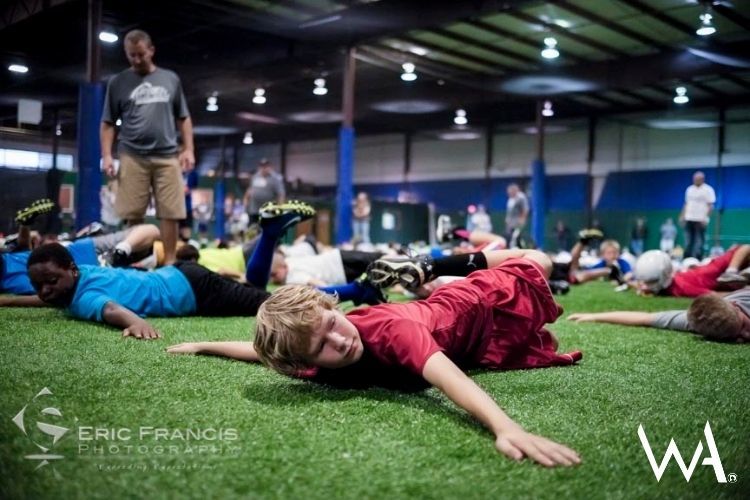
In youth sports today, more and more young athletes are having to miss seasons due to injury. One way to help prevent injuries from happening is by strengthening muscles through speed and agility training. However, what’s even more beneficial when it comes to injury prevention is stretching. Every athlete, young or old, should strive to stretch their muscle groups not only before and after exercise, but every single day.
At Warren Academy, we offer speed and agility training programs to help athletes improve functional strength and speed, and prevent injuries along the way. Here are the benefits of adding stretching to your daily routine!
What stretching does
Properly stretching allows a young athlete’s core body temperatures to slowly warm up, as well as lets your muscles and joints loosen up. This gives athletes an increased range of motion which will inevitably help boost their athletic capabilities. Usually, stretching is performed before speed and agility workouts, practices and games. This is crucial in preparing your body for what is to come. Also, stretching should primarily be focused on the muscles that will be exerting the most force.
As stretching before exercise is important, stretching after exercise is beneficial too. This is one of the most overlooked areas of injury prevention. Stretching before workouts should be designed to “warm up” and “get loose,” and post workout stretching should be focused on recovery and growth. When athletes stretch after working out, they are able to release lactic acid out from their muscles, which is a main cause of soreness. It also helps increase flexibility which is vital for every kind of athlete.
Here are some other benefits of stretching after a workout:
- Increased Flexibility
- Improved Blood Circulation
- Pain Prevention
- Increased Muscular Coordination
- Mental Clarity and Mind-body connection
What happens when you don’t stretch?
If athletes don’t stretch before and after exercise, they are basically limiting themselves and putting themselves at a higher risk for injury. It also will reduce the athlete's flexibility, which can lead to changes in normal muscle function as well as increase tendon tension. This is especially important for track runners or other athletes that are involved in high-running sports.
Which muscles should you stretch?
When warming up, it’s smart to stretch the muscles you will be using during exercise. In most sports, this includes legs (quads and hamstrings), shoulders, hip flexors, glutes and abdomen. This allows athletes to be fully prepared physically for the exercise they are about to endure. When you are finished with your workout it’s very important to stretch the muscles that are sore or injured during this time.
Stretching does not only prepare your body for exercise, but helps you prevent injuries along the way. By making stretching a daily routine, all athletes will be able to recover and grow, and prevent future injuries from happening.
At Warren Academy, our speed and agility training program helps athletes gain muscle and build speed. Contact us today to sign up for our speed and agility program, and learn more about any of our other sports performance programs!


